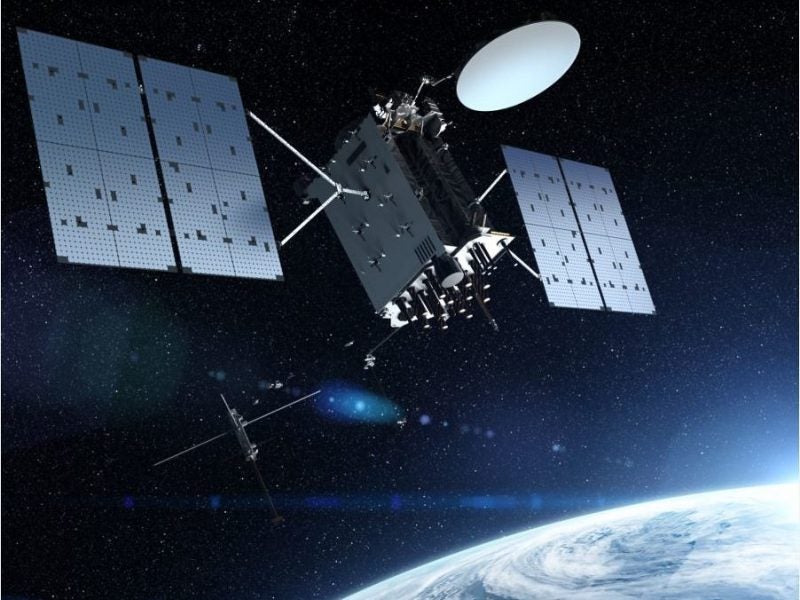
GPS III satellites are on the way, with regular launches inching the constellation closer to service satellite by satellite and promising a dramatic increase in accuracy for the US military, its allies and civilian users across the globe.
The newest satellites, built by Lockheed Martin, are three times as accurate and feature increased hardening against jamming and interference from the environment or adversaries. On top of this GPS III is designed with a new civilian signal built in.
The future constellation is set to be made up of 32 satellites; ten GPS III, and 22 GPS IIIF follow-on satellites designed to expand the capabilities of the system.
A key process from development to launch is testing and validation. Non-profit Draper forms a key role in this chain assessing the function of each satellite from the ground to orbit and assuring it meets the operational requirements.
Pathway to launch
A crucial step in the development, launch, and operation of GPS III is the testing and validation process, which begins on the ground with simulators and follow through till post-launch checks, and handover to the newly formed US Space Force.
Draper programme manager Jan Anszperger explained to Air Force Technology how the process of testing and validating GPS III satellites works as part of a testing team with SRI International and MITRE.
Anszperger says that Draper monitors the satellites 24/7, providing testing and validation capabilities for both satellites and ground systems across both a software and hardware perspective to ensure all aspects of the satellite function as they should.
Work on testing a satellite requires years of work beforehand. Draper filled a similar role with the testing and validation of the first GPS III completed in 2019, but work began years before.
Anszperger explains: “We completed the testing of the first GPS III satellite; that was completed in 2019. But the work for that started about eight years prior, testing some of the algorithms. We test the software, using simulators prior to that, all the way up to a pre-launch test at Cape Canaveral in which we validate that the satellite still meets all requirements and didn’t, to use the term loosely, ‘break’ in transport from the factory to Cape Canaveral.”
Once launched and activated, Draper then supported a six-month validation test to assure that the satellite meets the operation requirements, established initially by the US Air Force, and now by the US Space Force.
A key part of testing is done through satellite simulators, which mirror how the satellite is designed to operate and function on the ground.
Anszperger says: “Lockheed Martin, which is the prime for GPS III, in addition to building the satellites, they do build satellite simulators which are the functional equivalent of a satellite but it sits in a room.
“It’s plugged in the wall; it does not have any fuel in it. It may in fact, and usually does, look like a rack of equipment rather than looking like a satellite. All of the software that runs on the satellite is tested in the satellite simulators. We have an extremely high level of confidence that the simulator is, in fact, an extremely accurate rendition of the satellite itself.”
On the ground, the testing and validation team simply plug directly into the satellite simulator testing its raw function. After launch, the satellite is connected to for testing using satellite dishes to again validate it meets the requirements.
Modernisation and the ‘gold standard’
Anszperger explains: “GPS has been going through a long modernisation. This modernization started planning in the late 1990s. The first contracts to the satellite manufacturers were let in about the 1999 to 2000 timeframe, and both at that time you had Lockheed Martin and Boeing building and supplying GPS satellites for the Air Force.
“Those satellites are the first ones that had the newly defined signals. They are not all military they include L2C which is a civilian signal, on the L2 channel, there’s an L5 channel a brand new signal specifically for designed for the airline industry and landing of aircraft. They added a military signal specifically for the United States military and our allies.”
Building on this GPS III features an expansion in channels with L1C, although not operational as the ground stations aren’t ready, L1C is designed to allow GPS III satellites to work with other global navigation satellites like the European Galileo satellites, and Japan’s Quasi-Zenith Satellite System (QZSS).
Draper mission systems director Bill Borgia adds that the scope of the GPS enterprise in the US was one of its strengths, and contributed to making it the ‘gold-standard’ for navigation systems.
Borgia explains: “GPS is a pretty broad enterprise in the US and it’s supported by a wide swath of organizations be they, government, industry, non-profit, or even universities and the development of GPS really started right after WWII. So it’s something that’s been going on for a long time.
“In addition to it being a system that has a space segment, ground segment, and user segments, there is an entire enterprise and ecosystem that’s built around it. And it’s something that the US and its allies have built up over, literally several decades. That is a big part of why it’s the gold standard.”
Draper is well placed to work on GPS III having supported the US government through decades of space and military operations, providing testing and validation services.



